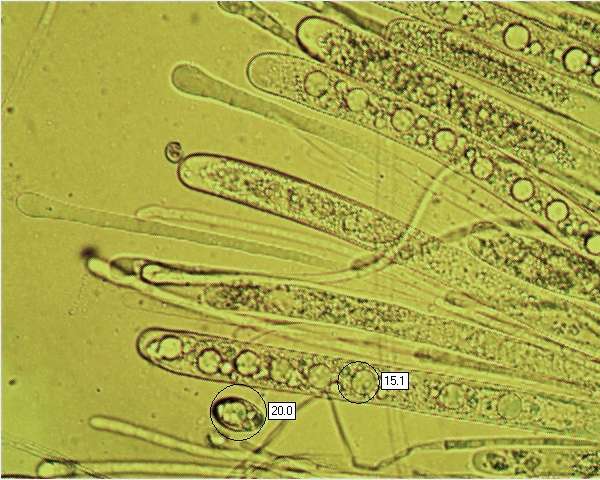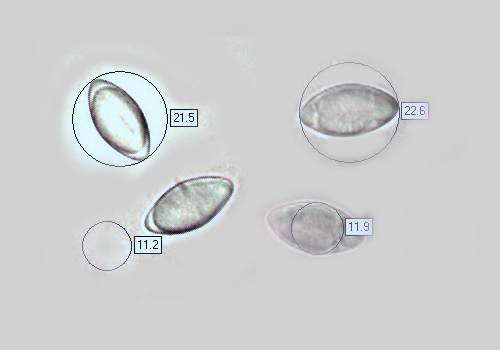Helvella macropus (Pers.) P. Karst. - Felt Saddle
Phylum: Ascomycota - Class: Pezizomycetes - Order: Pezizales - Family: Helvellaceae
Distribution - Taxonomic History - Etymology - Identification - Culinary Notes - Reference Sources
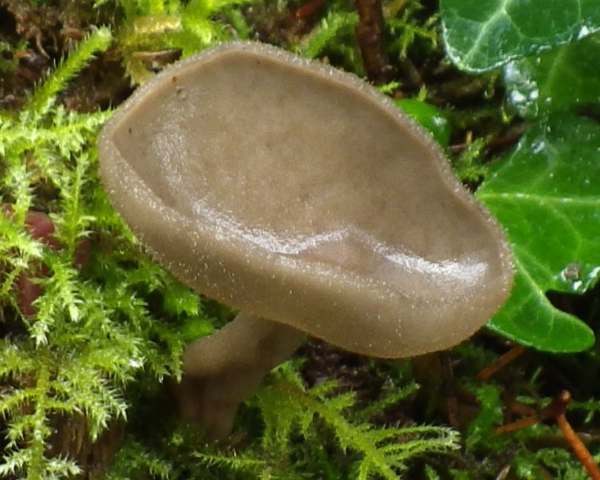
Helvella macropus is one of several 'saddle fungi' that appear in forests, particularly beside footpaths; however, it is distinguished when young by not being saddle shaped! These fairly common ascomycetes look like shallow cups perched on stems, and so from a distance they are often mistaken for small agaric fungi. Like their close relatives the morels, saddle fungi may have the capacity to form mycorrhizal relationships with woodland trees, but it is also clear that they can live as saprobes, feeding on woody debris.
Distribution
A rather uncommon find - probably exacerbated by its drab and inconspicuous colouring - Helvella macropus is nevertheless widespread across Britain and Ireland and occurs also throughout much of mainland Europe. The Felt Saddle fungus is recorded also from many parts of North America.
Taxonomic history
When Christiaan Hendrik Persoon described this ascomycete in 1789, he gave it the binomial scientific name Peziza macropus. Some 80 years later, in 1870, Finnish mycologist Petter Adolf Karsten (1834 - 1917) redescribed this species under its currently-accepted scientific name Helvella macropus.
Synonyms of Helvella macropus include Peziza stipitata Huds., Octospora bulbosa Hedw., Peziza macropus Pers., Peziza bulbosa (Hedw.) Nees, Macroscyphus macropus (Pers.) Gray, Macropodia macropus (Pers.) Fuckel, Lachnea bulbosa (Hedw.) W. Phillips, Lachnea macropus (Pers.) W. Phillips, Cyathipodia bulbosa (Hedw.) Boud., Cyathipodia macropus (Pers.) Dennis, and Helvella bulbosa (Hedw.) Kreise.
Etymology
Helvella is an ancient term for an aromatic herb. The specific epithet macropus means with a large foot (a long stem, in this instance).
Identification guide
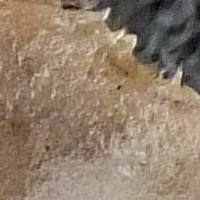 |
FruitbodyA concave cap 1 to 4cm across, regular when young but usually becoming a laterally compressed cup (and occasionally folding towards more of a saddle shape), is perched upon a slender, cylindrical grey stem 1.5 to 5mm diameter and 1.5 to 5cm long. Fertile (upper) cap surfaceThe smoothish and shiny upper fertile, asci-bearing surface (see left) is grey or grey-brown, sometimes with a greenish tint. |
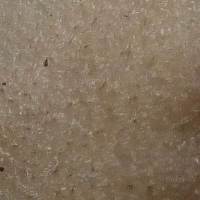 |
Infertile (lower) cap surfaceThe lower (infertile) surface is somewhat paler that the upper surface, and it is covered in tufts of tiny pale hairs that give it a granular appearance (see left). |
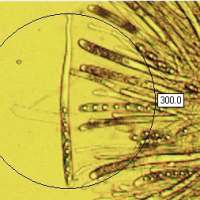 |
AsciAsci are typically 300 x 15μm. Each ascus contains eight spores. ParaphysesTypically 7μm wide, cylindrical, unbranching, with subclavate tips. |
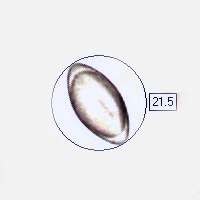 |
SporesSubfusiform; usually smooth but occasionally with a slightly roughened surface, 18-24 x 10-12.5μm; hyaline; usually with one large central guttule or oil drop and a smaller oil drop at each end. Spore printWhite. |
Odour/taste |
Faint pleasant odour; no distinctive taste. |
Habitat & Ecological role |
Singly or in small groups in mixed woodland, usually with broadleaf trees but occasionally under conifers. |
Season |
Summer and autumn in Britain and Ireland. |
Similar species |
Helvella lacunosa has darkish a grey-brown or black cap but it is readily differentiated from Helvella macropus by its saddle shaped cap and massive and deeply grooved stem. Helvella elastica is of similar size; it has a beige cap that is saddle shaped, and its stem is white. |
Culinary Notes
All Helvella fungi - of which at least 26 species have been recorded in Britain - should be considered as being inedible and possibly poisonous (and there is even some suggestion that they may be carcinogenic). These ascomycetous fungi are closely related to the potentially lethal False Morel, Gyromitra esculenta.
Reference Sources
Fascinated by Fungi, 2nd Edition, Pat O'Reilly 2016, reprinted by Coch-y-bonddu Books in 2022.
Dennis, R.W.G. (1981). British Ascomycetes; Lubrecht & Cramer; ISBN: 3768205525.
Breitenbach, J. & Kränzlin, F. (1984). Fungi of Switzerland. Volume 1: Ascomycetes. Verlag Mykologia: Luzern, Switzerland.
Medardi, G. (2006). Ascomiceti d'Italia. Centro Studi Micologici: Trento.
British Mycological Society (2010). English Names for Fungi
Dictionary of the Fungi; Paul M. Kirk, Paul F. Cannon, David W. Minter and J. A. Stalpers; CABI, 2008
Taxonomic history and synonym information on these pages is drawn from many sources but in particular from the British Mycological Society's GB Checklist of Fungi.
Acknowledgements
This page includes pictures kindly contributed by David Harries.
Fascinated by Fungi. Back by popular demand, Pat O'Reilly's best-selling 450-page hardback book is available now. The latest second edition was republished with a sparkling new cover design in September 2022 by Coch-y-Bonddu Books. Full details and copies are available from the publisher's online bookshop...
